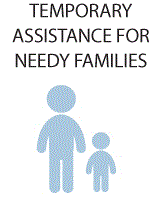All too often, the policy conversation surrounding TANF — the Temporary Assistance for Needy Families program that provides temporary cash assistance, job training and other services for struggling families — focuses on adults. But here in DC, there are 13,000 children from over 6,000 families who are poised to lose this critical safety net on October 1, 2015 due to existing time limits on the program if the Council does not support the mayor’s proposal to extend TANF benefits for one year.
Given this horizon, it’s an important time to step back and understand the population that TANF helps most in our community: our vulnerable children.
Today, one in four DC children live in poverty — that’s less than $24,000 a year for a family of four — and in our poorest neighborhoods east of the Anacostia River, the figure is closer to one in two. The meager cash benefits that TANF provides is often the only reason a child may have food for dinner and heat in the winter.
It’s no secret that the District is struggling to provide affordable housing and good paying jobs that offer pathways to the middle class for low-income families. Cutting children off of TANF support even as DC struggles to transition their parents to work will lead to devastating consequences. These children are already living in poverty and, for many, TANF payments are their family’s means of meeting their most basic needs, including housing and clothing.
Further, we don’t have to guess about how the loss of TANF will impact DC’s kids. The experiences of families in other jurisdictions tell us that cuts in TANF benefits have resulted in increased hunger and poor health outcomes among children.[i] Additionally, children in families who have lost TANF support do worse in a number of developmental areas and score lower on tests of quantitative and reading skills, resulting in long-ranging effects on these children’s ability to finish school and find meaningful work as adults.[ii]
While the direct impact on a child’s future well-being can be devastating, what is equally alarming is the link shown between cuts to TANF and child abuse and neglect.
There are many factors that contribute to child neglect. However, every year in the District, hundreds of children come into contact with the child welfare system because of the instability that results when their parents do not have adequate housing. If thousands of parents lose benefits and are unable to pay their rent, it seems likely that many of these families will become homeless, tearing apart the fragile stability in their children’s lives. And in fact, studies in multiple states have shown that TANF cuts correspond to increased housing instability and increased contact with the child welfare system.[iii]
If we are to use other states as a guide, if the TANF cut-off takes effect without transitioning these families to jobs and other support, our child welfare system, homeless services and other human services functions must be prepared to absorb a significant increase in demand. Many of these families will face an increased risk of instability and others will immediately fall into crisis. Unfortunately, none of our health and human services agencies are currently in a position to absorb a sudden spike in families.
The bottom line: eliminating TANF payments to families is the wrong thing to do. It will hurt children and will strain our social safety net.
All too often, the Children’s Law Center sees the impact that poverty can have on our most vulnerable youth. We believe it’s time that the District steps up to provide the necessary safety net to prevent children from falling into crisis. It is for this reason that Children’s Law Center urges the Council to support the mayor’s proposal to extend the time limit for one year for our struggling families while the Department of Human Services expands access to employment services and develops new service options, such as closely linking employment and mental health services.
If you want to print today’s blog, click here.
[i] The Children’s Sentinel Nutrition Assessment Program, The Impact of Welfare Sanctions on the Health of Infants and Toddlers (2002) available at: http://www.childrenshealthwatch.org/upload/resource/welfare_7_02.pdf.
[ii] Review of Research on TANF Sanctions, Report to Washington State WorkFirst SubCabinet, available at: http://www.docin.com/p-93913888.html.
[iii] Linda Burnam, Annals of the American Academy of Political and Social Science, Welfare Reform, Family Hardship, and Women of Color (2001). See, also, Sandra Butler, TANF Time Limits and Maine Families: Consequences of Withdrawing the Safety Net (2013), available at: http://www.mejp.org/sites/default/files/TANF-Study-SButler-Feb2013.pdf.
